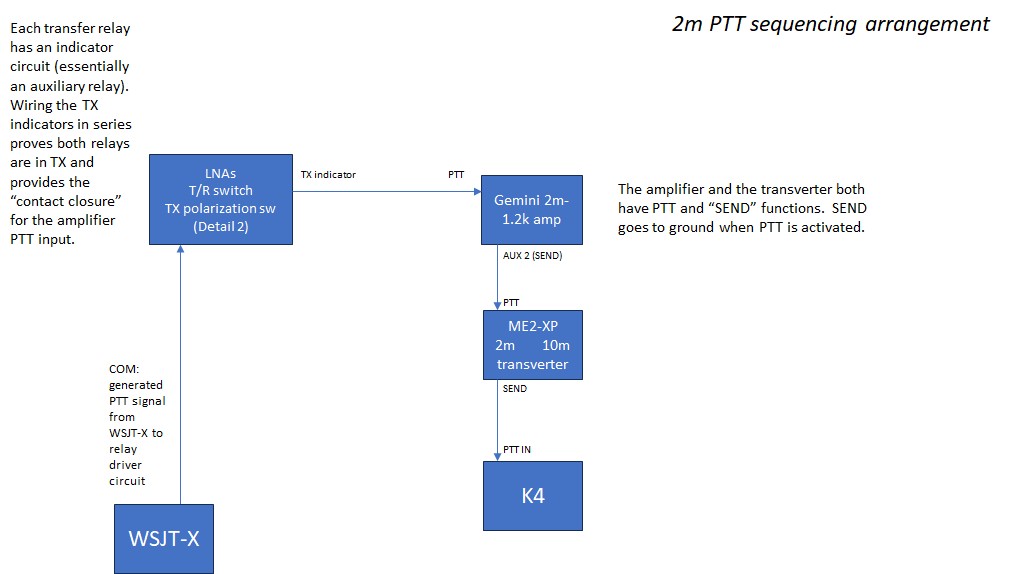NX7U
Scott Townley
Bridgewater, NJ
EME is a BIG thing to try and bite off. Nibbles are definitely better.
The end-state Big Plan is illustrated at the bottom of this page. But first it seemed prudent to go the baby step route:
1. Put up single yagi H-pol and evaluate local noise (because I've seen/heard from several hams that "they have too much noise for EME"). Bare bones: Armstrong rotator, no elevation. Give meteor scatter a go.
2. If successful, move to al/el rotation and continue to evaluate the noise situation.
3. If successful, go to a single H/V yagi. Work out all the kinks that come with MAP65.
4. If successful and there is apparent value, upgrade to 2 horizontally spaced H/V yagis.
5. If successful and there is apparent value, upgrade to 2x2 H/V yagis. This would be the ideal end-state, matching the recommended configuration in the 2012 ARRL Handbook section on EME.
Step 1 is not a small step. I need an antenna, support, transverter, LNA, relay, and amplifier. The most efficient route is to aim all equipment at the ideal end-state. I had the H-pol yagi on hand, which doesn't meet the 'most efficient route' criteria, so eventually it may become a spare or disposed of.
The Step 1 list of materials:
Antenna: InnovAntennas 11 element H-pol. I originally got this intending to use it for meteor scatter.
Support: Temporary military aluminum mast. Strong enough to go to 25' or so.
Transverter: HA1YA's ME2-XP, which is split-RF/split-IF and has two coherent RX paths. The coherent RX pats are required for MAP65.
LNA: DEMI NBLNA
Amplifier: Not really a lot of solid-state options in 2024. A Beko amp is a house payment. When I first contemplated 2m I targeted an OM-2002+ but when I was ready to pull the trigger they were discontinued (of course!). The Gemini line seemed quite reasonable and popular (and half the price) so I went with the Gemini-2 1.2k version. Life is too short for QRP...
See the Child pages (menu at left) for the implementation details.



